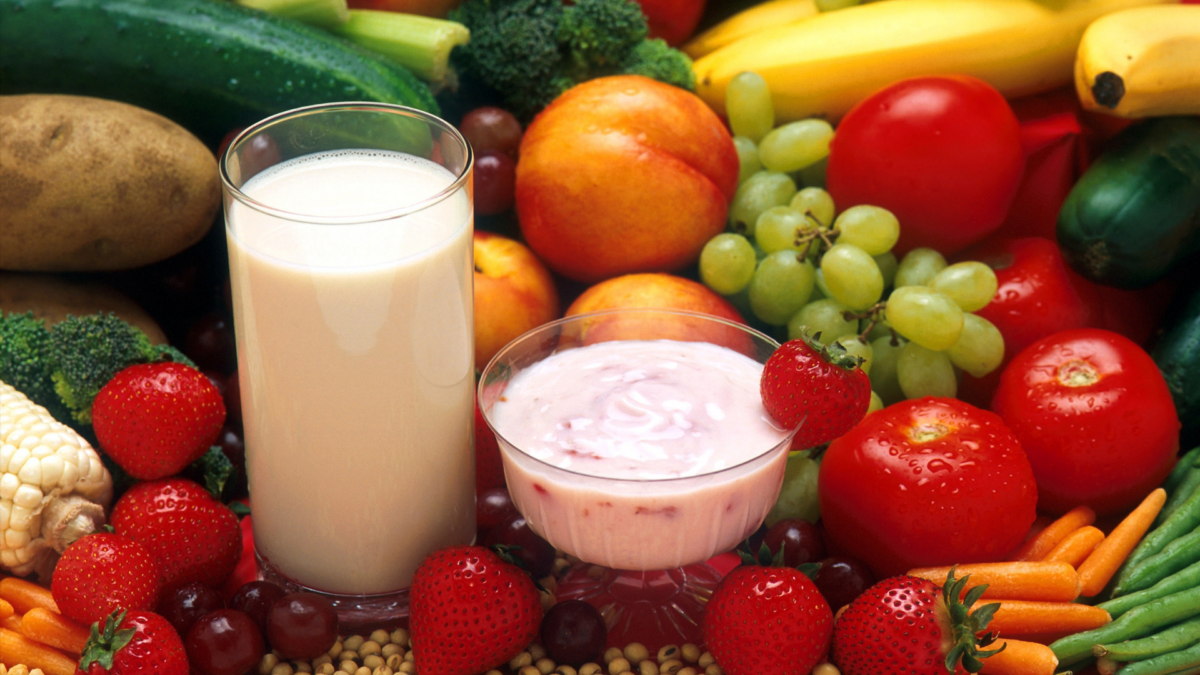Introduction
Consistently ranked as one of the most trusted healthcare professions by Ontarians, pharmacists play a vital role in optimizing patient outcomes. Traditionally, pharmacists are trained to focus on optimizing medication management for their patients. However, professional pharmacy services such as MedsChecks also present the opportunity for pharmacists to significantly impact patient care through evidence-based dietary counselling. A recent survey by the CPhA found that 91% of patients viewed pharmacists as a trusted source for advice on lifestyle changes.¹

This article will discuss the background of the Dietary Approaches to Stop Hypertension (DASH) diet, integration of this knowledge to enhance the value of MedsCheck consultations and highlight the benefits of this diet in patients with hypertension, cardiovascular disease, and diabetes.
Get ready to delve into the world of nutrition and discover how dietary counselling can help your patients reach their goals!
Understanding the DASH Diet
The DASH diet first gained prominence after a 1997 landmark trial which investigated the effects that 3 different dietary patterns had on blood pressure in over 400 participants. The study contained a control group, a group that ate a diet rich in fruits and vegetables, and a group that ate a combination diet rich in fruits, vegetables, and low-fat dairy products.² The term the DASH diet was born when the study found that the combination diet reduced blood pressure in both participants with hypertension and those without hypertension more than the other two dietary patterns. The effect was not only measurable but worked quickly, with participants experiencing a decrease in blood pressure two weeks into the study.²
Since then, researchers have recognized the challenges of adhering to strict dietary interventions and investigated the impact of variations to the DASH diet. One such study substituted low-fat dairy products with full-fat dairy foods. In the study, it was found that substituting full-fat milk, cheese, and yogurt for low-fat or nonfat dairy products did not adversely impact the health benefits of the original DASH diet.³
A key takeaway from the studies is that the DASH diet allows for flexibility in food choices so long as the core components of the DASH diet remain intact. The health benefits of the DASH diet are believed to be from incorporating foods rich in calcium, potassium, magnesium, and protein.

Although it has been common advice from medical professionals to incorporate more vegetables and fruits as part of lifestyle changes, the evidence suggests that dairy products, which contain these essential nutrients, are also an important element of the DASH diet.
In addition, the flexibility of the DASH diet removes the need for patients to adhere to strict dietary plans. The modified higher-fat DASH diet presents an alternative to the DASH diet, with less stringent dietary fat constraints that may promote greater uptake by patients.
DASH Diet Serving Sizes

According to the Heart and Stroke Foundation, the typical daily serving guide for a patient following the DASH dietary plan and consuming a 2,000-calorie-a-day diet is:
| Food Group⁴ | Recommended Servings⁴ | Examples⁴ |
|---|---|---|
| Vegetables | 4-5 per day | 1 cup raw leafy green vegetable
1/2 cup cut-up raw or cooked vegetables |
| Fruits | 4-5 per day | 1 medium piece of fruit 1/4 cup dried fruit 1/2 cup fresh, frozen or canned fruit |
| Grains | 7-8 per day | 1/2 cup cooked cereal, rice or pasta (preferably whole grain) 1 slice of whole-wheat bread |
| Dairy Foods | 2-3 per day | 1 cup (250 mL) milk 1 cup (250 mL) yogurt |
| Lean Meats (poultry and fish) | 2 servings or less per day | 3 ounces of cooked poultry or fish 1 egg |
| Fats and Oils | 2-3 per day | 1 teaspoon (5 mL) vegetable oil 1 tablespoon (15 mL) mayonnaise |
| Nuts, Seeds, Legumes | 4-5 servings per week | 1/3 cup nuts 2 tablespoons peanut butter 2 tablespoons seeds 1/2 cup cooked legumes |
What About Supplements?
Eating foods that are high in calcium, potassium, and magnesium (such as milk or yogurt) are hypothesized to be key contributors to the benefits of the DASH Diet. Controlled studies that isolated key components of supplemented minerals to evaluate their individual effects on blood pressure have found minimal benefit.⁵ It has been hypothesized that it is the synergy of these nutrients in the DASH diet that leads to clinically relevant health benefits and reduction in blood pressure. Although supplements are important, patients should be counselled to receive their nutrition from dietary sources if possible.
Health Benefits of the DASH Diet

In addition to reducing blood pressure, the DASH dietary pattern has since been shown to have a positive effect on lowering triglycerides, LDL-C, and serum uric acid levels (the main risk factor for gout) in addition to improving insulin resistance and weight loss.⁶⁻⁷
The positive impact of the DASH diet on a variety of cardiovascular and other health-related measures may make it a suitable dietary intervention for patients looking to improve their overall health and for patients with hypertension and cardiovascular disease. The DASH diet may also be beneficial in those who suffer from chronic conditions with a high comorbidity of hypertension such as gout, and diabetes.
Implementing the DASH Diet in Pharmacy Practice
The DASH diet can be a useful tool for pharmacists when counselling patients and conducting medication reviews. Integrating the DASH diet into MedsCheck consultations offers a valuable opportunity for pharmacists to address nutrition’s critical role in overall health and disease management. By incorporating the DASH diet into MedsCheck consultations, pharmacists can educate patients on making heart-healthy choices as part of a comprehensive treatment plan.
The content for this article was created by OPA and sponsored by Dairy Farmers of Ontario.
Resources
- Coletto, D. (2017). A national survey of Canadians on their perceptions and attitudes towards pharmacists. https://www.pharmacists.ca/cpha-ca/assets/File/pharmacy-in-canada/CPhA_NationalReport_BRIEFING.pdf
- Appel, L J et al. “A clinical trial of the effects of dietary patterns on blood pressure. DASH Collaborative Research Group.” The New England journal of medicine vol. 336,16 (1997): 1117-24. doi:10.1056/NEJM199704173361601
- Chiu, Sally et al. “Comparison of the DASH (Dietary Approaches to Stop Hypertension) diet and a higher-fat DASH diet on blood pressure and lipids and lipoproteins: a randomized controlled trial.” The American journal of clinical nutrition vol. 103,2 (2016): 341-7. doi:10.3945/ajcn.115.123281
- Heart and Stroke Foundation of Canada. (2023). The DASH Diet to lower high blood pressure. https://www.heartandstroke.ca/healthy-living/healthy-eating/dash-diet
- Tyson, Crystal C et al. “The Dietary Approaches to Stop Hypertension (DASH) eating pattern in special populations.” Current hypertension reports vol. 14,5 (2012): 388-96. doi:10.1007/s11906-012-0296-1
- Rai, Sharan K et al. “The Dietary Approaches to Stop Hypertension (DASH) diet, Western diet, and risk of gout in men: prospective cohort study.” BMJ (Clinical research ed.) vol. 357 j1794. 9 May. 2017, doi:10.1136/bmj.j1794
- Ramesh, Gautam et al. “Associations between adherence to the dietary approaches to stop hypertension (DASH) diet and six glucose homeostasis traits in the Microbiome and Insulin Longitudinal Evaluation Study (MILES).” Nutrition, metabolism, and cardiovascular diseases : NMCD vol. 32,6 (2022): 1418-1426.

